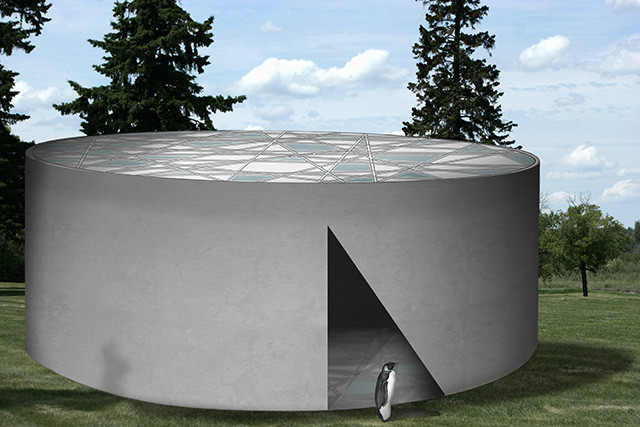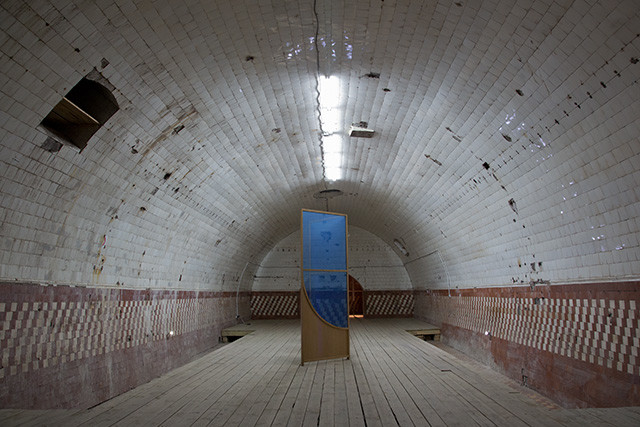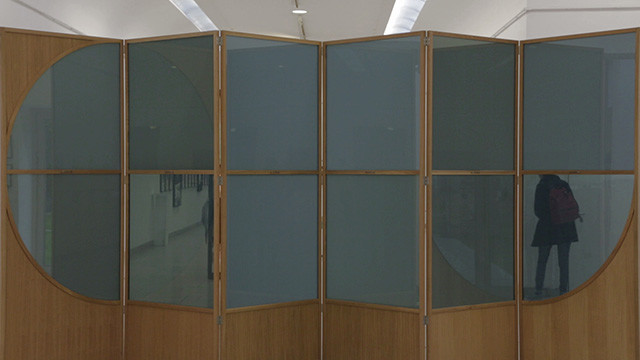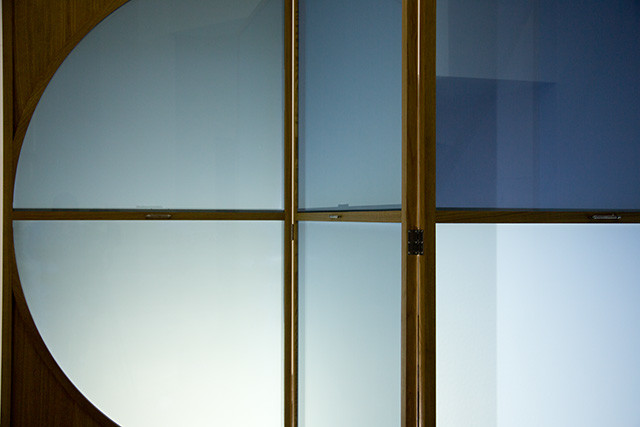Particle Pavilion
Markus Hoffmann’s project proposal Particle Pavilion is an attempt to make radioactivity visible. It is an architectural outdoor structure with a roof constructed from switchable glass panes. As rays emanating from the radioactive decay processes in the surroundings hit the window panes, the surface of the glass shimmers, alternating from opaque to transparent and back again. All of the windows together create an immersive pattern of transparency and opacity that changes constantly in response to radioactive energy in the external surroundings, resulting in a complex play of light in the interior of the pavilion.
“Radioactivity is invisible to the natural eye but omnipresent in minute quantities in all environments. Particle Pavilion is an aesthetic experiential approach to focus attention on radioactivity, implicitly addressing the visitors’ responsibility for that globally important issue.”

The interior of the pavilion is designed to reduce distraction and induce a state of calmness in visitors. Therefore, the materials used in the interior are made to absorb potential noise, creating an atmosphere of silent contemplation and inviting the visitor to lay down and observe the sky as it eternally vanishes and reappears. The Particle Pavilion can thus be interpreted as architecture, art installation, experiential space or scientific tool or even as a hybrid of all of those things combined, that constantly updates itself and invites visitors to create their own experience and write their own narrative.
Markus Hoffmann’s work encompasses a versatile spectrum of media, ranging from conceptual photography to time-based sculptures and installations. It addresses notions of time, place and personal history, as much as it does collective memory. Founded in scientific reference systems, his works oscillate between art, science and architecture. Working with topics related to radioactivity is one of Markus Hoffmann’s key interests. Comparable to the installation work Encounter, which is also constructed from switchable glass and radiation sensors, Particle Pavilion reacts to the environment in which it exists by making the invisible visible and the imperceptible perceptible.




Markus Hoffmann is an artist living in Berlin. In addition to pursuing his own career, Markus Hoffmann is an avid collaborator to and founding member of the artist collective Das Numen. You can browse other projects mentioned in his portfolio at markushoffmann.cc.
Photos: Markus Hoffmann